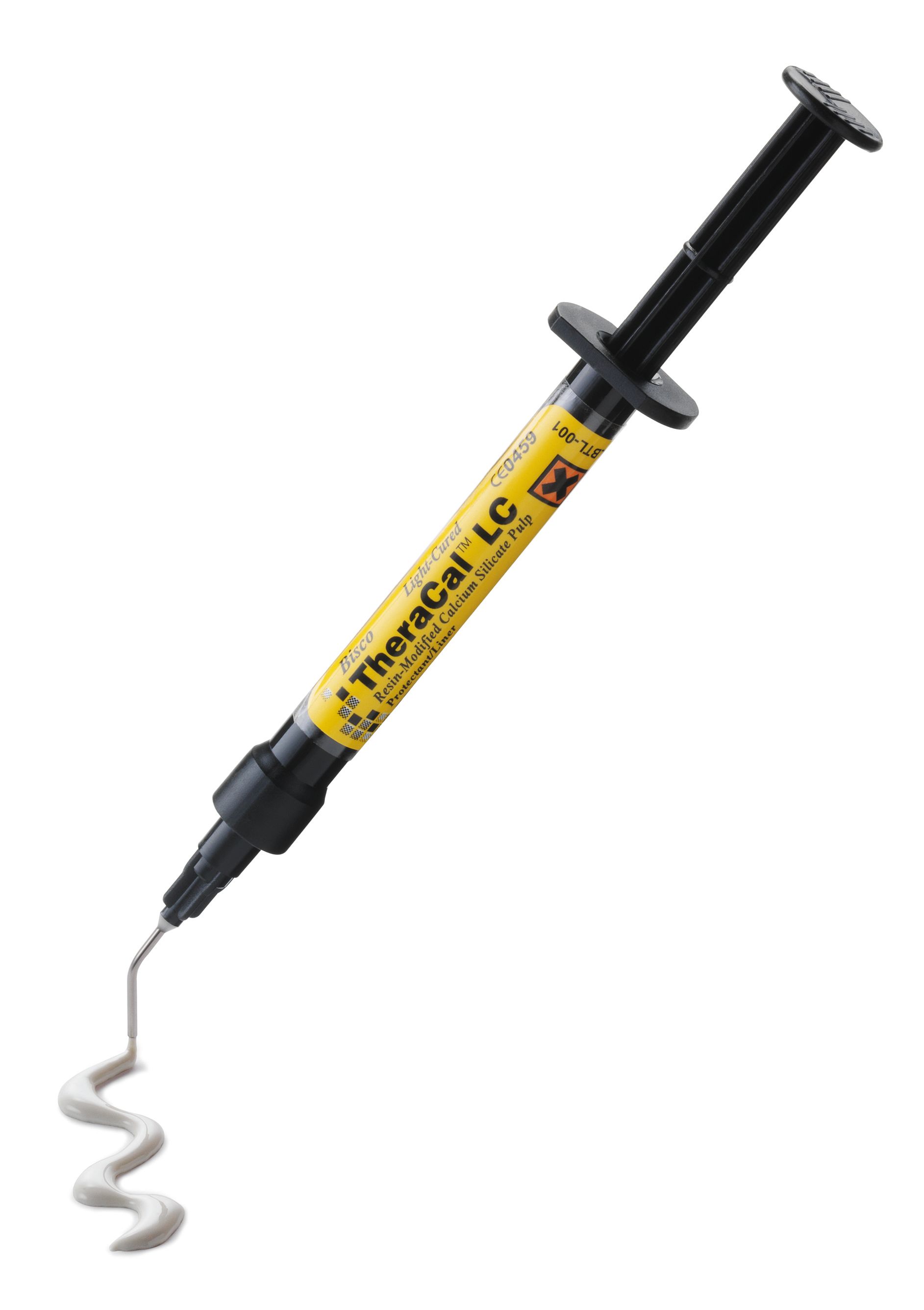How to get protection under all composite restorations [VIDEO]
There are significant challenges in clinical dentistry when trying to maintain a vital pulp. Dentin replacement due to caries has been attempted via various mechanisms and materials over the years.
Historically, none have been more effective and beneficial than calcium hydroxide ions, which is considered to be the “gold standard” by which vital pulp therapy modalities are measured. Today, more regenerative-type materials have been introduced that have effectively elevated this “standard” to a new level.
In our daily clinical practice, we encounter many situations that require attention to the protection of vital asymptomatic pulpal tissue including: 1) small pinpoint mechanical exposures, 2) carious pulpal exposures and 3) very deep caries, but no pulpal exposure. This is where the “magic” of calcium hydroxide ions comes into play. It 1) has a high pH and is bactericidal, stimulates formation of reparative dentin with its ability to extract growth factors from the dentin matrix, 2) has the ability to neutralize bacterial by-products and 3) has clinically been proven as a direct pulp-capping agent.
However, there are some difficulties with calcium hydroxide. It is very soluble and has a very slow self-cure process. Additionally, its physical properties make it inadequate to directly restore upon, since it will “cave in” when put under compression. With the advent and use of bonded composite materials, the dissimilar properties prevented it from being a good material to place directly beneath a composite restoration. Various versions of “light-cured” calcium hydroxides were introduced to overcome the challenges of the poor physical properties encountered in calcium hydroxide paste. However, since these materials used a hydrophobic resin, the therapeutic benefit and calcium release just didn’t match up to the traditional calcium hydroxide formulations.
In recent years, newer materials have been developed to help overcome some of these difficulties. Some materials were created with resins that were hydrophobic in nature; therefore, they never release significant levels of calcium from within those matrices. Other materials (calcium oxides) were created that could release significant calcium, but again, the mixing and handling properties made them difficult to use in many situations.
With the introduction of TheraCalLC® by BISCO, many of the challenges associated with previous materials were eliminated. This light-cured resin modified calcium silicate material uses a hydrophilic resin matrix which allows for the significant release of calcium and hydroxide ions to aid in pulp tissue therapy. Since it is resin based and light-cured, it is an easy solution for pulp protection under all composite restorations. The hydrophilic resin matrix allows for water exchange from the tooth allowing transfer of calcium and hydroxide ions, while at the same time being relatively insoluble with the expectation of achieving a more durable restoration.
TheraCalLC® acts as a scaffold onto which new dentin can form. It has an alkaline pH, as does calcium hydroxide, and can promote healing and apatite formation
Case Presentation
Step 1: 44-year-old female presented for restoration of teeth #17, #18 and #19. New restoration treatment was planned for the failing existing composite restorations (Fig. 1).
Step 2: After administration of a local anesthetic and placement of Isolite isolation device, removal of existing composite restorations was performed. Using a #8 Cerabur (Komet USA) in a 10:1 reduction contra angle slow speed handpiece (3000-6000 rpm) with water cooling, the infected dentin was removed, leaving the stained affected dentin in preps #18 and 19 (Fig. 2).
Step 3: TheraCal LC® was placed in the deep areas of the preparations in a thickness no more then one millimeter and cured for 20 seconds. Placement is very quick and easy using the syringe delivery system. The material’s opaque white color is very helpful in knowing where the material has been placed, so excess removal is easy prior to curing. Pulp protection on tooth #17 was not deemed to be necessary in this instance, since the preparation was not excessively deep, as were #18 and #19 (Fig. 3).
Step 4: The area was then restored using All-Bond Universal® (BISCO Dental) using the selective etching technique (per directions by BISCO Dental) and then final restoration of Beautifil Bulk Flow (Shofu Dental) material was placed and cured to within two millimeters of cavo-surface margin (this material is not recommended to be placed in the functional area of the tooth surface) and then Beautifil Flow Plus 00 (Shofu Dental) was incrementally placed and cured in the final two millimeters to finalize the restorations and enable chewing function (Figs. 4-5).
TheraCal LC is a light-cured, resin-modified calcium silicate filled liner designed for use in direct and indirect pulp capping and as a protective liner under composites, amalgams, cements, and other base materials. It can be used as an alternative to calcium hydroxide, glass ionomer, RMGI, IRM/ZOE and other restorative materials. TheraCal LC performs as a barrier and protectant of the dental pulpal complex.
TheraCal LC’s precise placement allows its use in all deep cavity preparations. The light-cured set permits immediate placement and condensation of the restorative material. Its proprietary formulation allows for a command set with a light curing unit while maintaining ease of placement due to thixotropic properties. The proprietary hydrophilic resin formulation creates a stable and durable liner.
ACTIVA BioACTIVE Bulk Flow Marks Pulpdent’s First Major Product Release in 4 Years
December 12th 2024Next-generation bulk-fill dental restorative raises the standard of care for bulk-fill procedures by providing natural remineralization support, while also overcoming current bulk-fill limitations.
